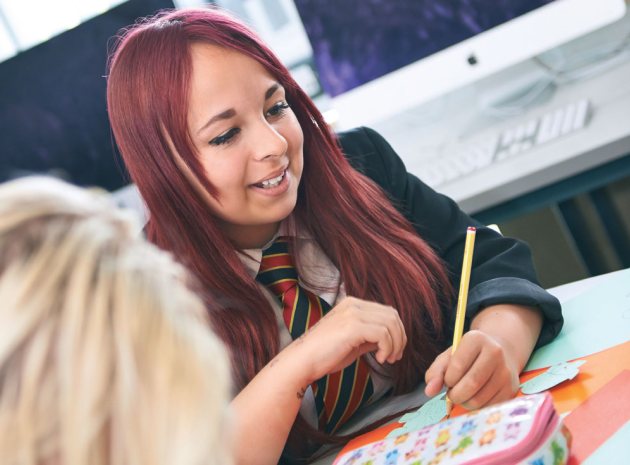Jeff Tooze’s pacey lesson suggestion will get every student in the room competing to absorb the most information possible…
Why teach this?
This lesson which I am eager to share with all Teach Secondary readers is a concept I have refined over the past year. With a fair wind behind it, it will provide a fast paced academic outlet for students across the entire spectrum of learning styles, while keeping the focus firmly on learning and engagement. Nonetheless, what gives this idea most currency is that the structure is easily adaptable and recyclable for multiple subjects and topics, and is genuinely exciting to teach; not least, because you will learn something new about your students every time you use it.
Introduction
As a trainee, there was a great deal of pressure over the last year to deliver an ‘outstanding’ lesson. However the problem I encountered was that, as I focused in on meeting the observation criteria, the feeling of being disenfranchised from my own teaching grew with it; it wasn’t mine, it was what it was meant to be. A feeling I would wager you have all had at some point in this profession.
So when I finally bucked the trend of getting ‘good’ with a lesson I actually enjoyed preparing and teaching, it felt like I had received manna from heaven. Having now employed this with Year 10s and 8s in ‘outstanding’ observations, and also with a Year 6 taster lesson, I feel it will have something to offer you in your own practice whoever and whatever it is that you teach; particularly where you are looking to balance the sometimes suffocating requirements of the job, with the importance of genuine enthusiasm for what you are delivering.
In short, this idea is what I like to call a ‘Competitive Marketplace’, adapted from the well-established ‘Marketplace’ strategy encouraged by the likes of Paul Ginnis. In terms of application, it is particularly efficacious in those lessons where you need to impart a great deal of knowledge about a topic that has multiple causes/factors that need to be covered; i.e. in a science lesson on energy, where you might need to construct detailed knowledge about all of the fuels that can be used, e.g oil, coal, wind etc. Additionally, it has real purchase because it gets students to collaborate in groups, prioritise information, practice skimming and scanning reading skills, work with sources and most importantly, constantly communicate what they are learning to others as they are learning it; making them facilitators for their peers in the process.
Starter Activity
The hook for the students from the off is that they are going to be competing with each other in small groups to acquire the knowledge they need to win a quiz, with a prize of your own choosing, at the end of the lesson. This competitive mentality encourages students to strive for as much information as possible and work as a team, which I find is the downfall of more traditional ‘Marketplace’ activities. It is important to communicate that this is their goal early, as it gets them in a conducive and receptive mood quickly.
I would recommend beginning with an abstract starter activity, which helps identify and signpost the information you will want the students to be looking for in the rest of the lesson. For example, when I used this to teach how Hitler transitioned from Chancellor of Germany into Fuhrer, I asked them to discuss and feed-back what obstacles might stand in Hitler’s way, and what he might need to do to overcome them. These would become the two key focus questions of the main activity, thus scaffolding what information to look out for early. This also establishes a good baseline for their knowledge which you or others, can use to help measure progress against.
Main Activities
Students should be put into groups of three, where one of the students is of higher ability. This is because they will need to take on the role of ‘Team Leader’ who will have a differentiated role throughout the lesson, which should ensure consistent challenge for them.
To begin, split the different factors or topics up among your groups so there is an even spread; I had eight groups and four topics, so this worked out quite nicely. For each factor I produced an information sheet which included full text about that topic with lots of colour and pictures to help them focused.
While reminding them of their focus questions from the starter, their task is to create what I call a ‘Cheat-Sheet’ to help them remember the information in front of them. The idea of this is that they must, in the style of ‘Pictionary’, translate the key information into a series of pictures that will help them recall what they need to know. This is the best part of the lesson for me, as it really helps you get to know the character of your students.
It’s always good to show them an example of what you are looking for on the board. In this instance I showed them ‘The Night of the Long Knives’ depicted as a crescent moon, crossed with an exceptionally long kitchen knife. While this might sound feckless, the drawings they create undoubtedly help them to remember the content and get their imaginations going. I also strongly recommend setting a word-limit for their cheat-sheet. This means they can record important information like names, which are hard to describe in pictures, but retain the incentive to focus on the pictures, in order to keep their words for this vital information.
Now you take the information away from the groups, and leave them with only their cheat-sheet as a frame of reference. What gives this whole exercise a great deal of educational value, is that the abstract nature of their pictures means they are forced to explain, rather than just recall notes.
Next, the ‘Team Leader’ stays and the other two members go and research the information from other ‘Team leaders’. Stress that they need information from all the topics around the room to win the quiz! This task is all about asking the right questions to find the information, and the quality of explanation, so circulating and priming lower ability students with questions is a good strategy to differentiate here. Of course, the higher cohort is then challenged by being the one explaining to others as a natural part of their role.
Summary
The groups then reconvene, share what they have learned and take on the quiz which is made of questions from a good cross-section of all the different areas groups were given. This acts as a great AfL plenary, and I love to use mini-whiteboards for this, as the whole class AfL is really easy to gauge progress with. Giving the mini-whiteboards out at the beginning also provides you opportunities as you go throughout the lesson to help chunk it up for pace; just ask, “everyone write down one key word they have learnt so far”, or any other area you would like to focus on, they are great tools when they support the use of questioning in this way.
While this structure provides pace, active learning, AfL, simple differentiation, support for all the VAK styles and a genuinely useful teaching activity, the real boon is that it is fun for both student and teacher; and once you have created the resources the first time around, it’s very recyclable and repeatable. Please, use it and abuse it to your heart’s content!
Home learning
Homework for this task will depend on the type of topic it is used to teach. Nonetheless, what you should try and encourage with any homework is to get students to think about all of the areas rather than just the one they focused on originally. You could use something like a blank pie-chart, where learners have to divide it up to show how significant they think each area is, giving one reason why this is the case for each.
About the expert
Jeff Tooze, Teacher of History and Politics at Clacton Coastal Academy. Jeff Tooze is a First Class Honours graduate in ‘Modern History’ from the University of East Anglia. He has just completed his Initial Teacher Training and PGCE with North Essex Teacher Training (NETT) and was passed as an ‘Outstanding’ trainee, taking a special interest in the teaching of KS5.
stretch them further
As this task is competitive by nature I like to introduce ‘bartering’ into the activity, particularly so that the higher ability can have an extra level of challenge, whereby they ask for information in return for giving some up. This also encourages the researchers to explain in return. When students get into this role it’s incredibly entertaining to watch, as some are utterly ruthless in their approach
To extend this activity into another lesson I would recommend a quick turnaround on the marking of their books and constructing a DIRT (Dedicated Improvement and Reflection Time) style session as a follow up. Mark using targeted questions for each student to fill in their apparent knowledge gaps and get them to engage in responsive feedback, as some kernels of information can be missed along the way in this activity.









